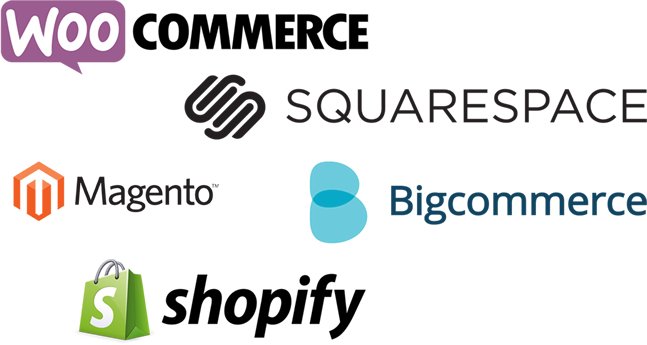Share this
How to Increase Average Order Value (AOV) With Examples
by Kyla Friel on Dec. 20, 2023

As an ecommerce professional, a good chunk of your time is probably dedicated to examining key metrics like conversion rate, bounce rate, and overall revenue for your company. A critical figure that should be on your radar is the average order value (AOV). Average order value represents the average amount of money each customer spends per transaction, directly affecting a company’s bottom line. In fact, increasing the AOV means increased revenue without the need to boost the total number of orders or drive more traffic to your site. And, if you use the right strategies, you can do this all while offering your customers more value — turning them into long-term, repeat buyers.
In this article, we cover the best ecommerce strategies to increase average order value, along with examples of how to implement them. Read below to learn how to increase revenue while also building a loyal customer base.
Strategies for Increasing Average Order Value
Below are some strategies you can mix and match to increase the average order value for your online store.
Cross-Selling and Upselling
Cross-selling and upselling are techniques used to encourage customers to buy related or more premium products. They are also excellent ways to increase the AOV. Cross-selling involves recommending products that complement the original item. An example would be suggesting a phone case with a smartphone purchase.
When upselling additional products, adopt a friendly, genuine approach similar to how a friend might suggest something. Avoid aggressive selling tactics. Instead, thoughtfully select products that enhance or complement the main item in the customer's cart.
Focus on suggesting lower-priced items as add-ons. As an example, for customers planning to spend between $30 to $50, it's more effective to encourage them to add a $10 item that complements their purchase rather than trying to double their spending. This strategy feels less like a sales pitch and more like helpful advice, increasing the likelihood of the customer accepting the upsell.
Sephora employs this strategy by highlighting lower-priced items as upsell offers on the website’s checkout page. These items are useful add-ons to the customer’s basket; if they’re buying makeup, they might need a brush or blending sponge to apply the makeup with!
Upselling, however, involves encouraging customers to purchase a higher-end version of the product they're considering. An example of upselling could be encouraging a customer looking at a basic coffee maker to consider a higher-end model by advertising the enhanced features. Businesses can significantly increase the value of each order by integrating these suggestions on product pages, during the checkout process, and in follow-up communications.
Apple does this by allowing online shoppers to view side-by-side comparisons between models, highlighting the improved features of the more expensive items. Seeing the feature list and added benefits compared directly like this can be enough to sway the customer to purchase the higher-priced device.
Offer Combined Value with Product Bundles
Creating product bundles involves grouping related products and selling them as a package at a combined price. Bundles are often lower priced than if the items were purchased separately. Bundles are particularly effective when they combine products that customers often use together, creating a more complete solution for their needs.
Bundling provides value to the customer by seemingly offering “more for less.” It leads to an increased overall order value since existing customers who might only want to buy one item are now spending more on a bundle. And since they’re perceived as more “bang for the buck,” product bundles are attractive as gifts or trial sets for those new to the brand.
This strategy is especially popular with businesses offering cosmetics or health supplements because it aligns perfectly with the customer's journey in discovering and using products. Cosmetics and skincare routines often involve multiple steps, each requiring different products.

Glossier does this by offering various product bundles, like this one that is made for “winter skin.” They advertise the value the customer is getting when purchasing the bundle by stating outright that you save 16% over purchasing each individual product.
By bundling these complementary products, companies can offer a complete regimen or routine in one purchase. Customers will appreciate not having to research and select each item individually.
Encourage Larger Purchases with Volume Discounts
Volume discounts are a straightforward strategy to encourage customers to buy more. Customers are likely to purchase more of an item in a single transaction when offered a discount on larger quantities. This approach is especially effective for items that are repurchased regularly, where customers see the benefit of stocking up at a lower price per unit. This encourages bulk purchases, thus increasing the overall order value and company AOV.
Encourage More Add-ons with a Free Shipping Threshold
Setting a minimum purchase amount for free shipping is a proven tactic to increase AOV. Customers are often willing to add more items to their cart to qualify for free shipping. The allure of 'free shipping' can outweigh the cost of additional items, making it a powerful motivator for customers to spend more. This increase in the number of items purchased per transaction not only leads to a higher average order value but also offers a perceived added value for the customer.

Barnes and Noble, a popular bookstore, offers online shoppers free shipping on orders exceeding $40 before tax. This strategy is particularly effective as the price of a single book usually falls below this threshold. As a result, customers are often motivated to add additional books or items to their cart to qualify for free shipping, boosting the company’s average order value.
Build Long-Term Customer Value with a Loyalty Program
Loyalty programs reward repeat purchases by allowing customers to accumulate points with each order. These points can be redeemed for discounts or special offers on future purchases. As customers accumulate points, they're likely to make larger purchases or add more items to their cart to reach the next reward tier.
Encouraging larger purchases to earn more points will not only increase the average order value but also foster customer loyalty and repeat business. This is crucial for long-term revenue growth.
Ulta does a great job of this through its use of membership tiers and allowing customers to redeem points for direct discounts on their purchases. Higher tiers are more desirable because they come with additional benefits, such as accumulating more points per dollar spent and free shipping for the highest membership tier. This encourages customers to spend more to achieve or maintain their higher-tier status.
Leverage Urgency with Time-Sensitive Offers
Limited-time offers and discounts create a sense of urgency that can motivate customers to make larger purchases. Customers may add more items to their order or choose higher priced items than they normally would so as not to miss out on the offer. These offers can take the form of flash sales, holiday specials, or exclusive discounts for a short period. Encouraging customers to take advantage of the deal before it expires will increase the AOV during the offer period.
The Bay takes advantage of this strategy through the use of Holiday Flash Sales. Offering one-day-only sales entices customers to purchase more than they might during a regular shopping experience. The fear of missing out (FOMO) plays a significant role here. When customers are aware that they have only a limited time to act, the perceived value of the offer increases, and they are more likely to make spontaneous decisions. This behavior not only increases the average order value but also accelerates the buying decision process, leading to a higher conversion rate during the sale period.
How to Calculate the Average Order Value Formula
For any ecommerce business, understanding and calculating the Average Order Value (AOV) is critical. It helps in assessing customer spending patterns and shaping business strategies. You can calculate the AOV using this straightforward formula:
AOV = Total Revenue / Number of Orders
This formula involves dividing the total revenue generated within a certain period by the number of orders received in that period.
Imagine your online store generated $15,000 in revenue in a month. Suppose the total number of orders during this month was 300. The AOV is then calculated as follows:
AOV = $15,000 / 300
AOV = $50
So, for that month, your average order value was $50. This indicates that, on average, each order placed in your store amounted to $50. By regularly calculating the AOV, you gain valuable insights into customer purchasing behaviors, enabling you to effectively tailor your marketing, pricing, and product strategies.
Combine Strategies to Increase Average Order Value
The best way to increase the average order value is to combine several strategies rather than using one at a time.
For example, since loyalty programs collect valuable customer data over time, you can use that data to create targeted upsells or cross-sells, enhancing the customer’s perceived value and willingness to spend more.
Bundling products and offering a free shipping threshold can also work hand in hand. Your customer base might be more inclined to purchase a bundled package if they know that reaching a certain spending threshold will qualify them for free shipping. This approach increases the immediate order value and enhances customer satisfaction by providing them with a perceived bonus value.
Some of these strategies might be easier to implement than others. If you don’t already have the ecommerce fulfillment processes in place, it might be challenging to start assembling and shipping things like product bundles.
Partnering with a Third-Party Logistics (3PL) provider that offers services like bundling is the best way to ensure your ecommerce business can implement these strategies flawlessly.
With Shipfusion, customers can create their own product bundles swiftly and in real-time through the Portal client interface. The process is straightforward: simply create a new project and select the specific SKUs to include, and you're ready to sell and fulfill these unique offers in just minutes.
Shipfusion is the highest-rated 3PL that offers customizable, turnkey fulfillment solutions with the industry expertise needed for order fulfillment of all kinds. Let us handle your fulfillment so you can get back the time needed to create and implement these new business strategies. To learn more, contact one of our fulfillment experts today.
Share this
You May Also Like
These Related Articles

The Importance of Sustainability in eCommerce

The Best eCommerce Platforms For Online Retailers

How to Reduce Cart Abandonment In Ecommerce
- May 2024 (3)
- April 2024 (8)
- March 2024 (5)
- February 2024 (5)
- January 2024 (5)
- December 2023 (4)
- November 2023 (2)
- October 2023 (5)
- September 2023 (4)
- August 2023 (2)
- July 2023 (1)
- June 2023 (4)
- May 2023 (1)
- March 2023 (2)
- February 2023 (1)
- October 2022 (1)
- September 2022 (5)
- August 2022 (4)
- July 2022 (7)
- June 2022 (4)
- May 2022 (5)
- April 2022 (7)
- March 2022 (2)
- February 2022 (1)
- January 2022 (3)
- December 2021 (2)
- November 2021 (4)
- October 2021 (2)
- September 2021 (5)
- August 2021 (4)
- July 2021 (5)
- June 2021 (4)
- May 2021 (2)
- April 2021 (3)
- March 2021 (3)
- February 2021 (3)
- January 2021 (2)
- December 2020 (4)
- November 2020 (2)
- October 2020 (4)
- September 2020 (2)
- August 2020 (1)
- July 2020 (6)
- June 2020 (5)
- May 2020 (2)
- April 2020 (2)
- March 2020 (4)
- February 2020 (1)
- December 2019 (1)
- May 2018 (1)
- March 2018 (2)
- February 2018 (3)
- January 2018 (3)
- November 2017 (3)
- July 2017 (4)
- March 2017 (3)
- February 2017 (5)
- January 2017 (3)
- December 2016 (4)
- November 2016 (6)
- October 2016 (6)
- October 2015 (1)
- September 2015 (1)
- June 2015 (3)
- May 2015 (3)
- August 2014 (1)
- July 2014 (1)
- March 2014 (1)
- February 2014 (1)